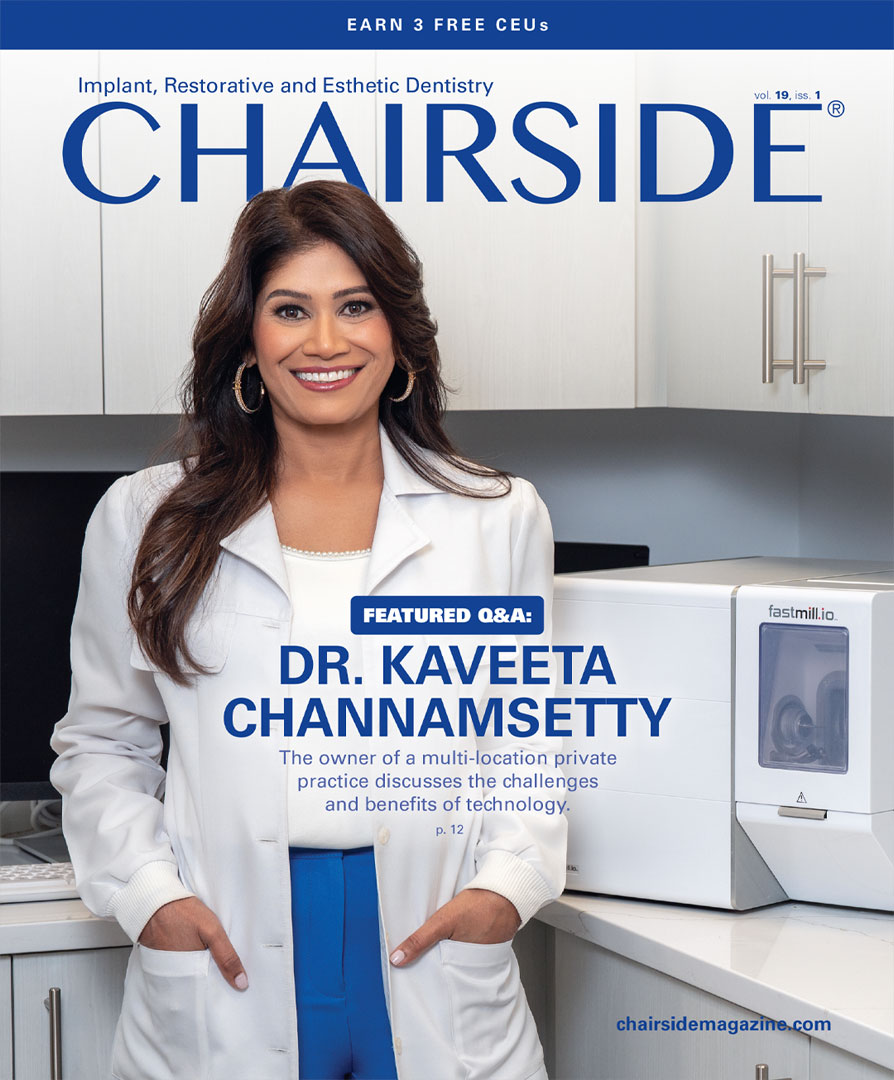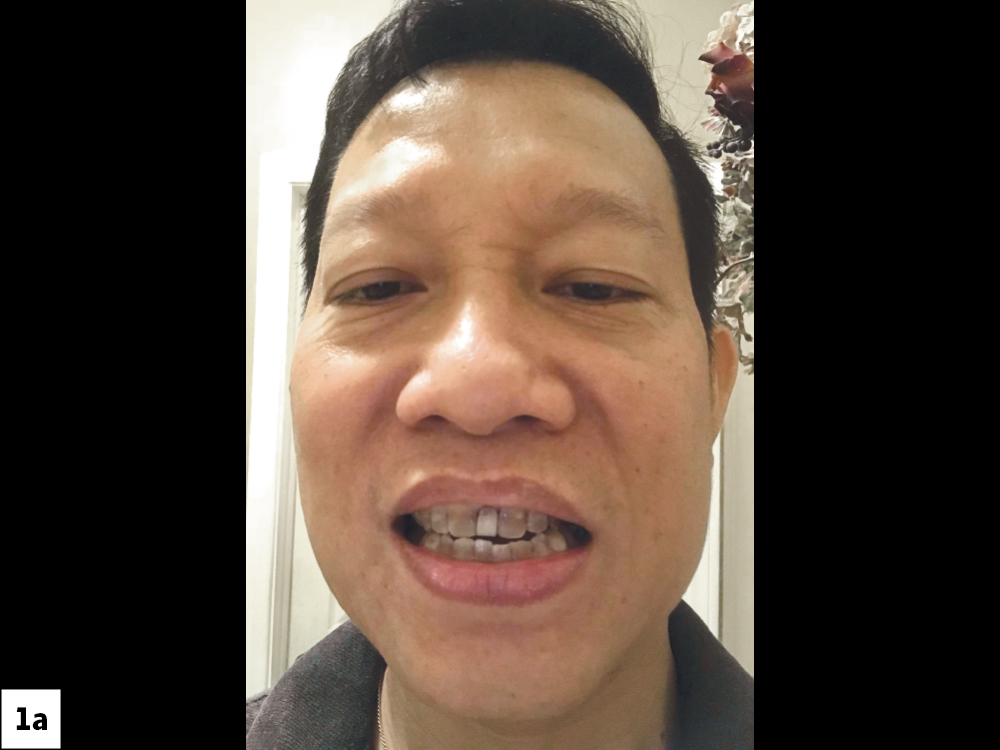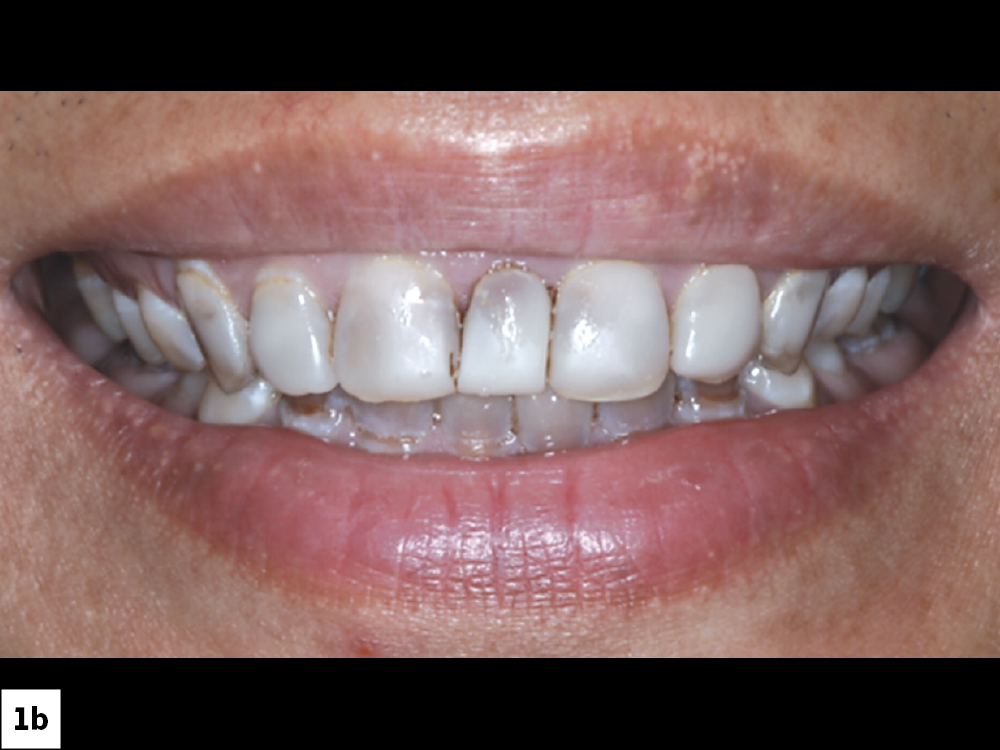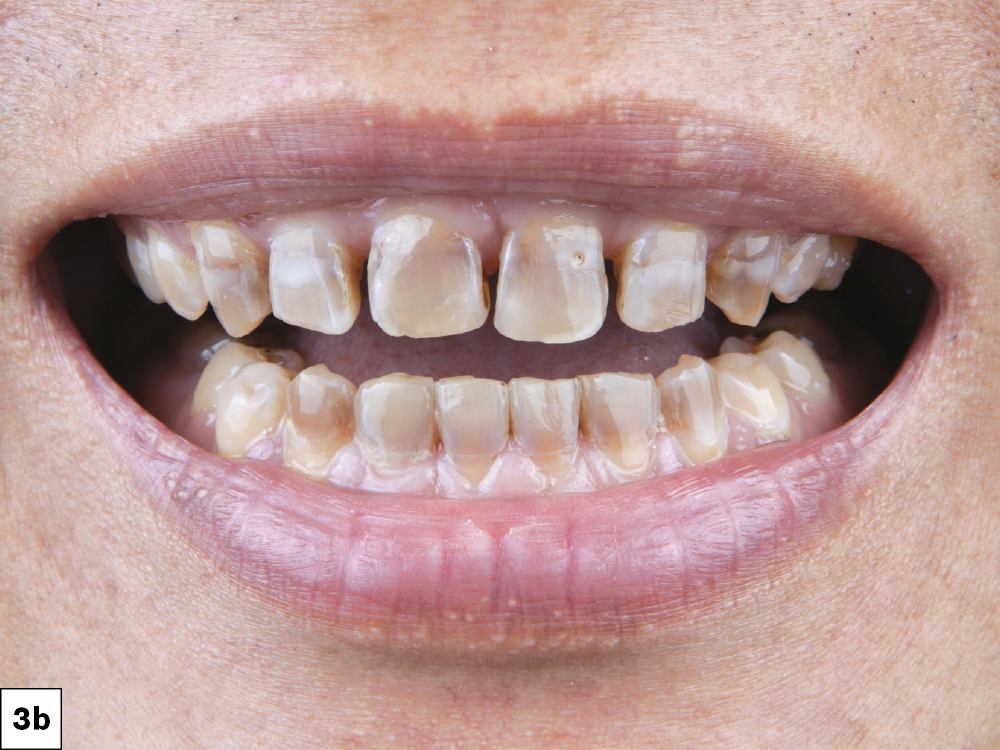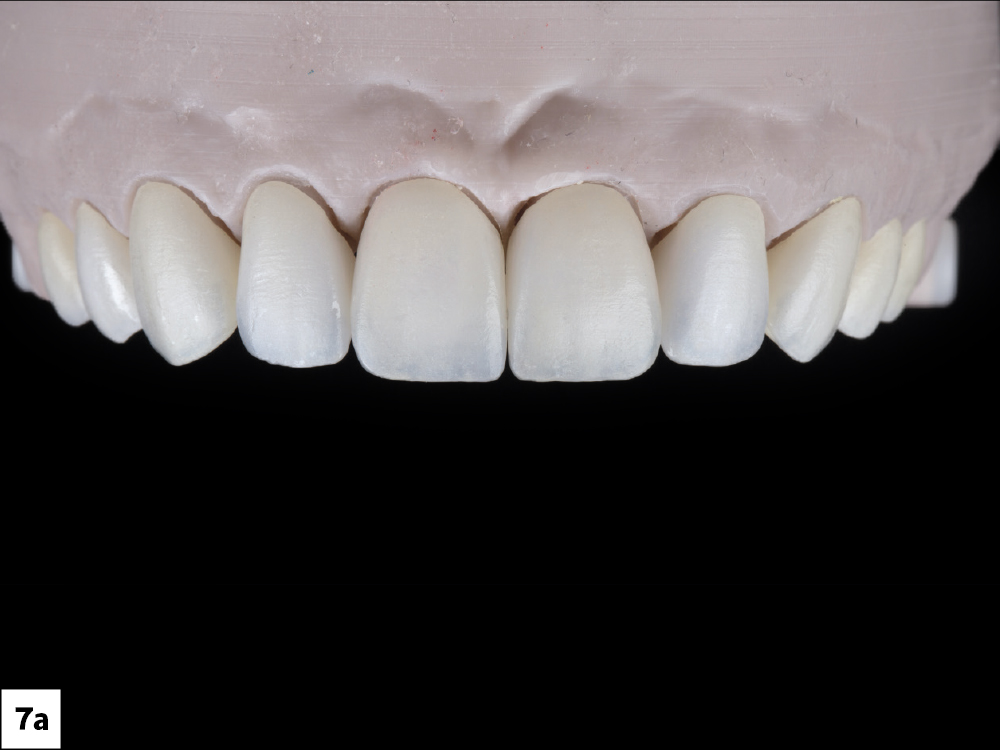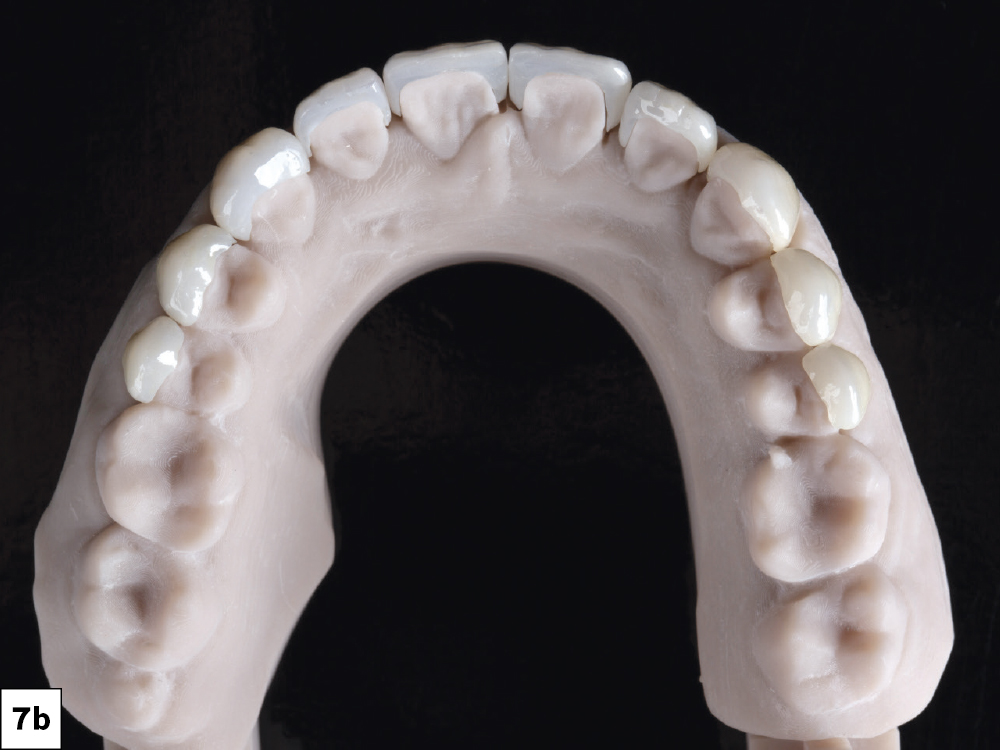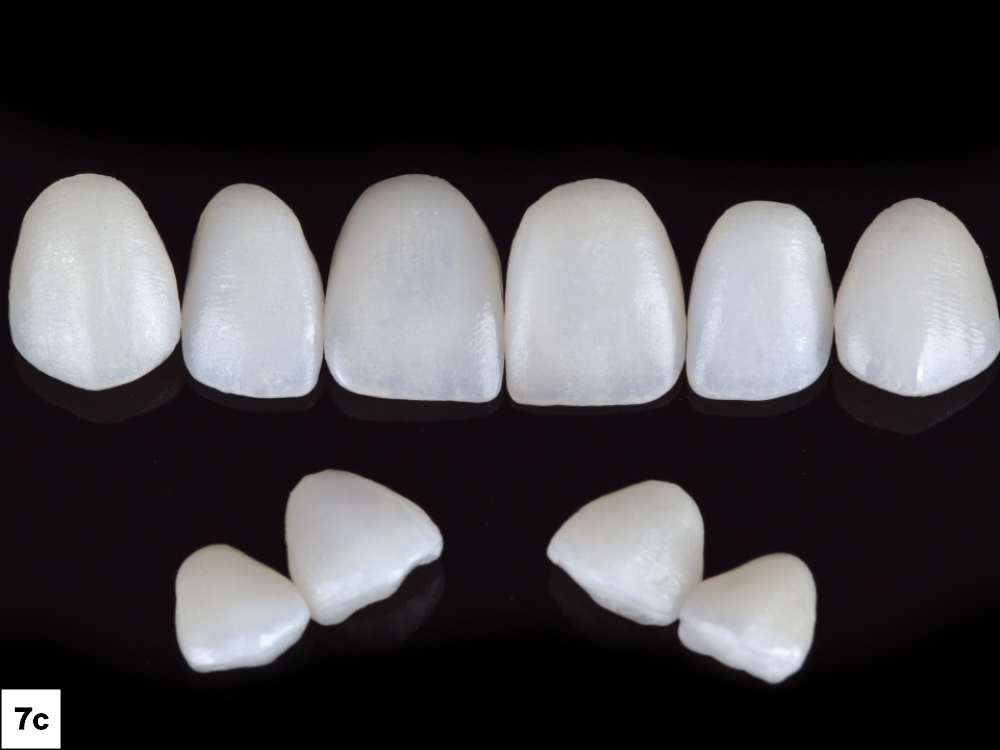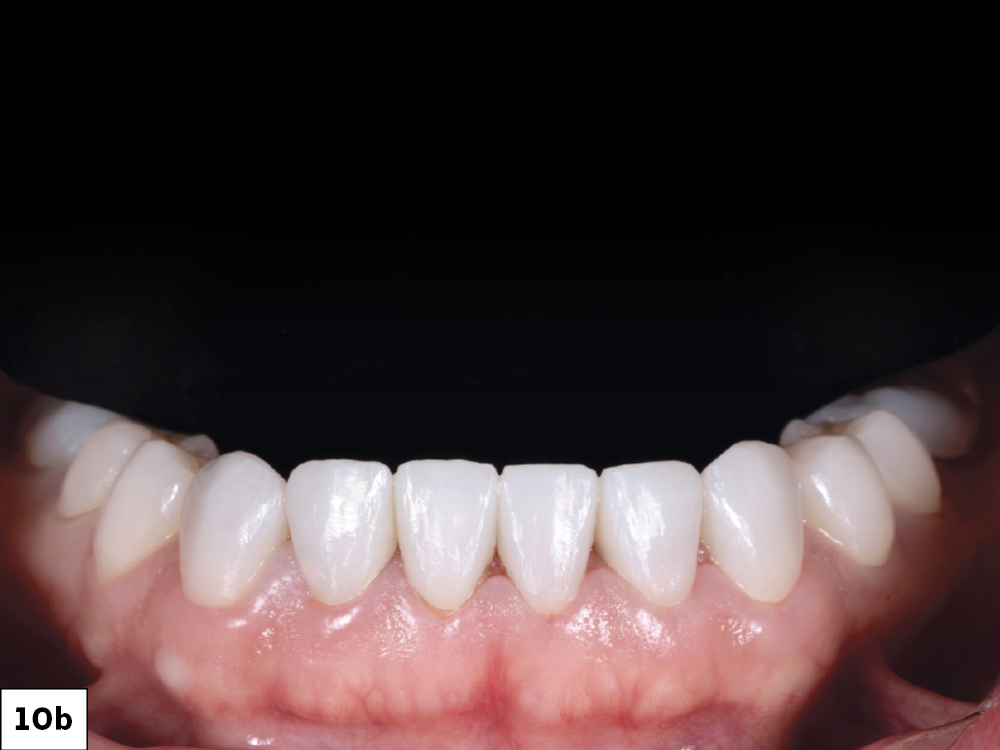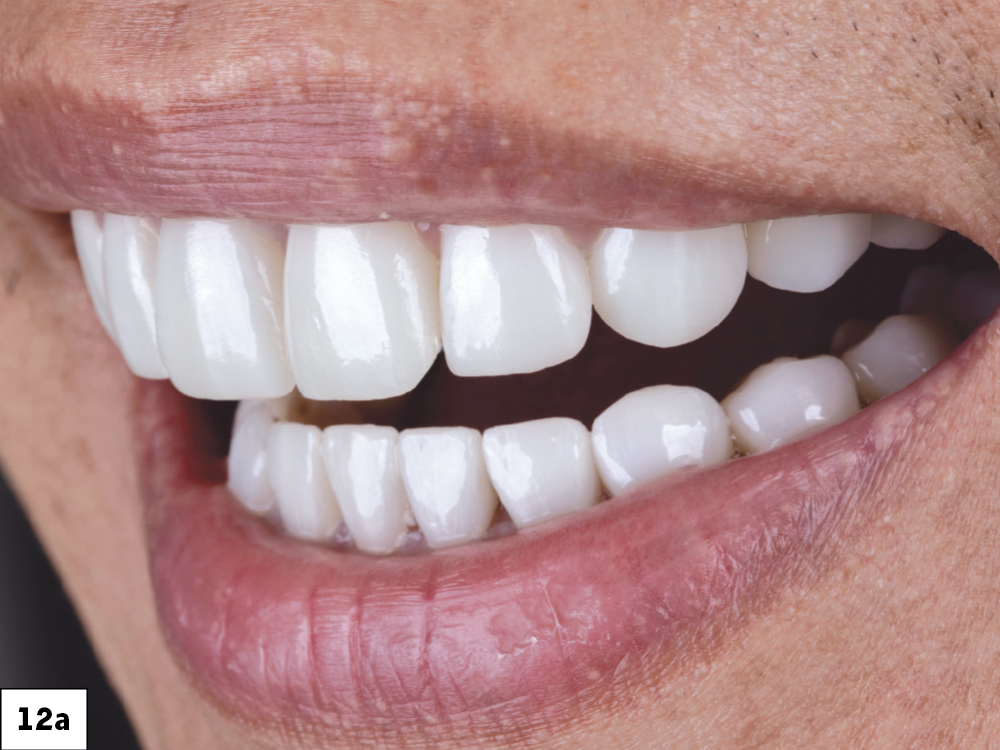Mesiodens and Tetracycline Staining: Solving the Esthetic Challenge (1 CEU)

Amesiodens is a supernumerary tooth in the midline of the maxilla, usually between the two central incisors. This condition affects between 0.15% and 1.9% of the population,1 and its etiology is not fully understood. Untreated, it can lead to complications such as delayed eruption, crowding or cyst formation in addi¬tion to the esthetic challenges often caused by this limitation of facial symmetry. This case report shows the steps to treat a patient with a large mesiodens, and how I used the digital tools of the glidewell.io™ In-Office Solution to restore his smile
CONCLUSION
This case report demonstrates the benefit of orthodontics to create an ideal situation for restorative treatment. While it would have been much simpler to treat the case by extracting the mesiodens and adding width to his centrals, the result would not have provided the same esthetic improvement.
All third-party trademarks are property of their respective owners.
Available CE Course
Reference
-
Seladi-Schulman J. Mesiodens (extra tooth) causes and why it should be treated [Internet]. Healthline. Healthline Media; 2021 [cited 2024 Feb 1]. Available from: https://www.healthline.com/health/dental-and-oral-health/mesiodens.

